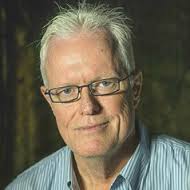disruptive technology
See the following -
An Interview with Ushahidi’s Juliana Rotich
When there is a major catastrophe, ordinary sources of news and public information are unavailable. However, it is extremely important to get real time updates about the situation not only to control the catastrophe but also to help populations cope with such a crisis. Ushahidi is doing exactly that by using software.
- Login to post comments
As American Docs Resist MHealth, Developing Countries Drive Growth
A new study of the global mHealth market finds that consumers and developing countries are driving its growth, while physicians are reluctant to adapt.
- Login to post comments
Cloud-based EHR Interoperability Takes Front Stage
 Because our industry is still in diapers, we focus on the lack of basic interoperability and ruminate on why EHR vendors struggle (aka, refuse) to share even basic patient data. But we must take heart, health IT friends, stiffen our upper lips and look to trends and examples that create optimism (i.e., help get us out of bed in the morning): 21st century interoperation is happening in health IT. In a recent interview with Healthcare Dive, Athenahealth CEO Jonathan Bush laid out a vision for how the cloud is the disruptive technology to bring healthcare into the Internet age. He describes “level three interoperation,” where two cloud-based systems connect once and support multiple interoperations that accomplish more than just data sharing.
Because our industry is still in diapers, we focus on the lack of basic interoperability and ruminate on why EHR vendors struggle (aka, refuse) to share even basic patient data. But we must take heart, health IT friends, stiffen our upper lips and look to trends and examples that create optimism (i.e., help get us out of bed in the morning): 21st century interoperation is happening in health IT. In a recent interview with Healthcare Dive, Athenahealth CEO Jonathan Bush laid out a vision for how the cloud is the disruptive technology to bring healthcare into the Internet age. He describes “level three interoperation,” where two cloud-based systems connect once and support multiple interoperations that accomplish more than just data sharing.
Google's Release of TensorFlow Could be a Game-changer in the Future of AI
 The development of smarter and more pervasive artificial intelligence (AI) is about to shift into overdrive with the announcement by Google this week that TensorFlow, its second-generation machine-learning system, will be made available free to anyone who wants to use it. Machine learning emulates the way the human brain learns about the world, recognising patterns and relationships, understanding language and coping with ambiguity. This is the technology that already provides the smarts for Google’s image and speech recognition, foreign language translation and various other applications. This is valuable technology, and it is now open source; the source code is freely available and can be modified, developed in new directions and redistributed in the same way that the Linux operating system is open.
The development of smarter and more pervasive artificial intelligence (AI) is about to shift into overdrive with the announcement by Google this week that TensorFlow, its second-generation machine-learning system, will be made available free to anyone who wants to use it. Machine learning emulates the way the human brain learns about the world, recognising patterns and relationships, understanding language and coping with ambiguity. This is the technology that already provides the smarts for Google’s image and speech recognition, foreign language translation and various other applications. This is valuable technology, and it is now open source; the source code is freely available and can be modified, developed in new directions and redistributed in the same way that the Linux operating system is open.
- Login to post comments